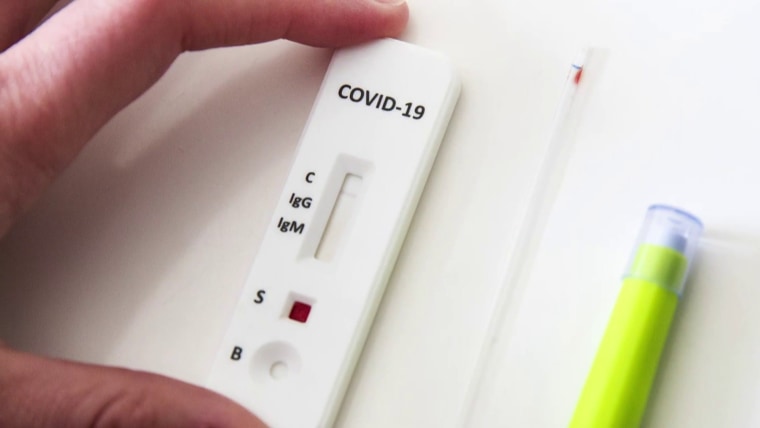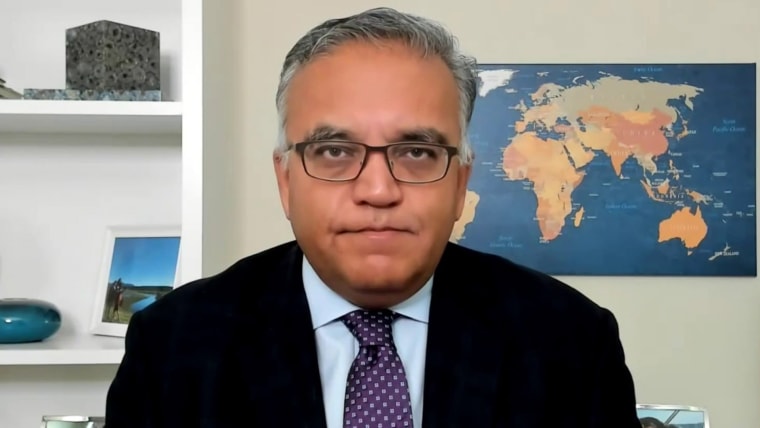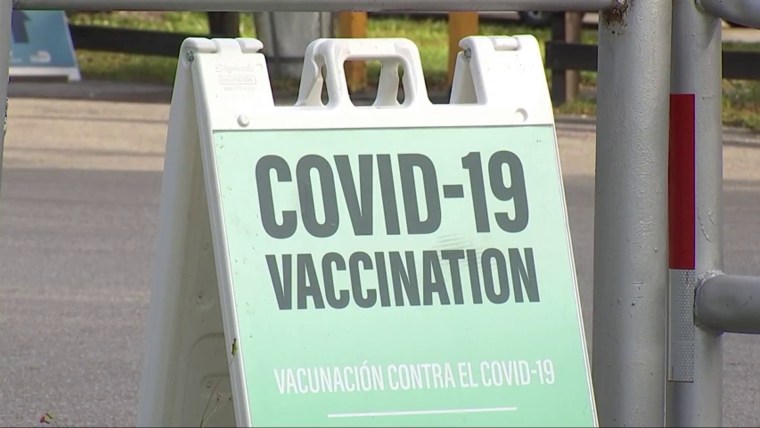As Americans scramble for at-home tests to find out if they’re infected with COVID-19, some experts are suggesting they should swab their throat, in addition to their nose, to better detect the omicron variant.
The advice comes as the U.S. Food and Drug Administration has cautioned some rapid antigen tests may be less sensitive at detecting the highly contagious variant. The at-home tests are done with a nasal swab and the FDA urged people to continue to use them as authorized, including following the instructions when it comes to collecting a test sample.
“The FDA has noted safety concerns regarding self-collection of throat swabs, as they are more complicated than nasal swabs — and if used incorrectly, can cause harm to the patient,” Jim McKinney, a spokesperson for the agency, told TODAY in a statement.
But because people who are exposed to omicron appear to get sick faster, “this means that there is a chance the virus isn’t yet growing in the nose when you first test,” tweeted Dr. Michael Mina, a former assistant professor of epidemiology at the Harvard T. H. Chan School of Public Health who now works as the chief science officer of eMed.
The “virus may start further down. Throat swab + nasal may improve chances a swab picks up (the) virus,” he wrote last month, adding it “does likely improve sensitivity.”
The hashtag #SwabYourThroat has showed up on Twitter, with users sharing their experiences of testing negative when swabbing their nose, but positive when adding the throat swab.
Epidemiologist Eric Feigl-Ding is among experts who have been suggesting making that change. He pointed to a study that found omicron replicates much faster in human airways than the delta variant, but slower in lung tissue.
Based on the evidence he has seen, Feigl-Ding said he would “definitely” do a throat swab if he were to test himself for COVID-19 at home.
“The fact that (omicron) replicates differently in different tissues means that you might have to sample different tissues,” Feigl-Ding, a senior fellow at the Federation of American Scientists and a former faculty member at Harvard Medical School, told TODAY.
“When the FDA authorized these tests, they were authorized for pre-omicron use … the dynamic is so fluid and I think FDA just needs to catch up on this.”
It’s not that an at-home test won’t pick up omicron in the nose when swabbing there, it’s just that it might pick it up half a day or day later, he added.
Saliva swabs may be helpful, too
Swabbing the throat is done by many other countries, Feigl-Ding said, pointing to an instructional video by the UK Health Security Agency that shows how to take a combined throat and nose swab.
The throat sample is usually taken first, followed by the nose sample. Frequently, many countries have had their swabbing technicians use the same swab for both places, but some countries use two different swabs, he noted. People are generally instructed to not eat or drink for 30 minutes before a throat swab.
Another study, published last month ahead of peer review, found there was “higher viral shedding in saliva” compared to nasal samples with omicron, making mouth swabs the preferred sample when using the more sensitive PCR tests. Diagnostic performance was better when people swabbed their cheeks, tongue, gums and palate, researchers found.
“The virus uses a different mechanism to gain entry into cells and this has changed the types of cell in the upper respiratory tract that the virus preferentially infects,” said Dr. Diana Hardie, one of the authors and a clinical virologist at the University of Cape Town in South Africa.
“I expect that the antigen tests would also be affected, but we still need to confirm this.”
‘Don’t take matters into your own hands’
But medical experts urged people to still follow the instructions on the COVID-19 test they were using. The at-home kits were validated using the nose swab so that’s the best thing to do at this time, said Dr. Helen Boucher, interim dean of Tufts University School of Medicine and an infectious disease physician at Tufts Medical Center.
“It’s important to follow the FDA authorized test recommendations,” she noted, “until we have better data.”
The microenvironment of the nose is different than that of the throat, so not all tests are going to be valid in both places, added Dr. Roy Gulick, chief of the division of infectious diseases at NewYork-Presbyterian/Weill Cornell Medical Center and professor of medicine at Weill Cornell Medicine.
“I can’t recommend that people use these swabs in their throat. It’s just not the way the tests have been authorized,” he cautioned.
“Please don’t take matters into your own hands. We need to wait to see if any of these tests will be valid to do a throat swab as well.”
As a general guidance, if the at-home test is positive, believe it, Gulick advised. If it’s negative and you’re still highly suspicious that you have COVID-19 because of symptoms or exposure to someone with the infection, then you should get the PCR test.
“I don’t think this is a do-it-yourself thing where people have the swab and say, ‘What’s the harm in swabbing another place?’ We want the results of these tests to be reliable,” he noted.
Health - Latest - Google News
January 06, 2022 at 01:35AM
https://ift.tt/3HKGIrT
COVID testing: Is a throat swab a better way to detect omicron? - TODAY
Health - Latest - Google News
https://ift.tt/2zrj9Ud
Bagikan Berita Ini

















0 Response to "COVID testing: Is a throat swab a better way to detect omicron? - TODAY"
Post a Comment